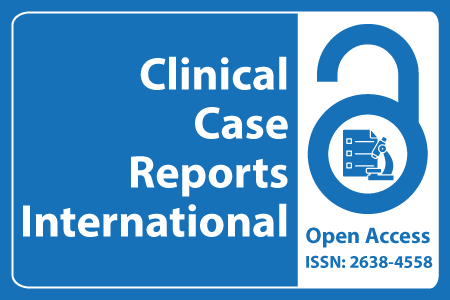
Journal Basic Info
- Impact Factor: 0.285**
- H-Index: 6
- ISSN: 2638-4558
- DOI: 10.25107/2638-4558
Major Scope
- Pulmonary Disease
- Child Birth
- Hepatitis
- Chronic Disease
- Pain Management
- Depression
- Chemotherapy
- Infectious Disease
Abstract
Citation: Clin Case Rep Int. 2020;4(1):1186.DOI: 10.25107/2638-4558.1186
Androgenic Granulosa Cell Tumor in an Adolescent Female: An Unusual Presentation
Supriya Dankher
Department of Obstetrics and Gynecology, VMMC and Safdarjung Hospital, India
*Correspondance to: Supriya Dankher
PDF Full Text Case Report | Open Access
Abstract:
In women, androgen secreting tumors can arise either from ovaries or adrenals. Virilizing ovarian tumors constitutes less than 0.2% of cases of hyper and rogenism and less than 1% of all ovarian tumors. Granulosa Cell Tumors (GCTs) usually produce estrogens, and hence, cause symptoms and signs of estrogen excess. GCT mostly present as perimenopausal and postmenopausal women with complaints of abnormal uterine bleeding. There are two distinct histological types, Adult GCT (AGCT) and Juvenile GCT (JGCT), which display different clinical and histopathological features. Adult Granulosa Cell Tumors (GCTs) are the most common type of ovarian sex cord tumors and account for 1% to 2% of all ovarian tumors. Juvenile granulosa cell tumor on the other hand is less common and occurs mainly in premenarchal girls. We are reporting a case of an adolescent female presenting with features hyper and rogenism such as hirsutism, breast atrophy and clitoromegaly. On ultrasound, a cystic ovarian mass of 8.8 cm × 6.4 cm × 5.5 cm was seen in midline from which bilateral ovaries couldn’t be demarcated. She underwent staging laparotomy followed by left salpingo-opherectomy which was histopathologically reported as adult granulosa cell tumor. Young age and androgen secreting nature of adult granulosa cell tumor make this case rare and worth reporting.
Keywords:
Cite the Article:
Dankher S. Androgenic Granulosa Cell Tumor in an Adolescent Female: An Unusual Presentation. Clin Case Rep Int. 2020; 4: 1186.













